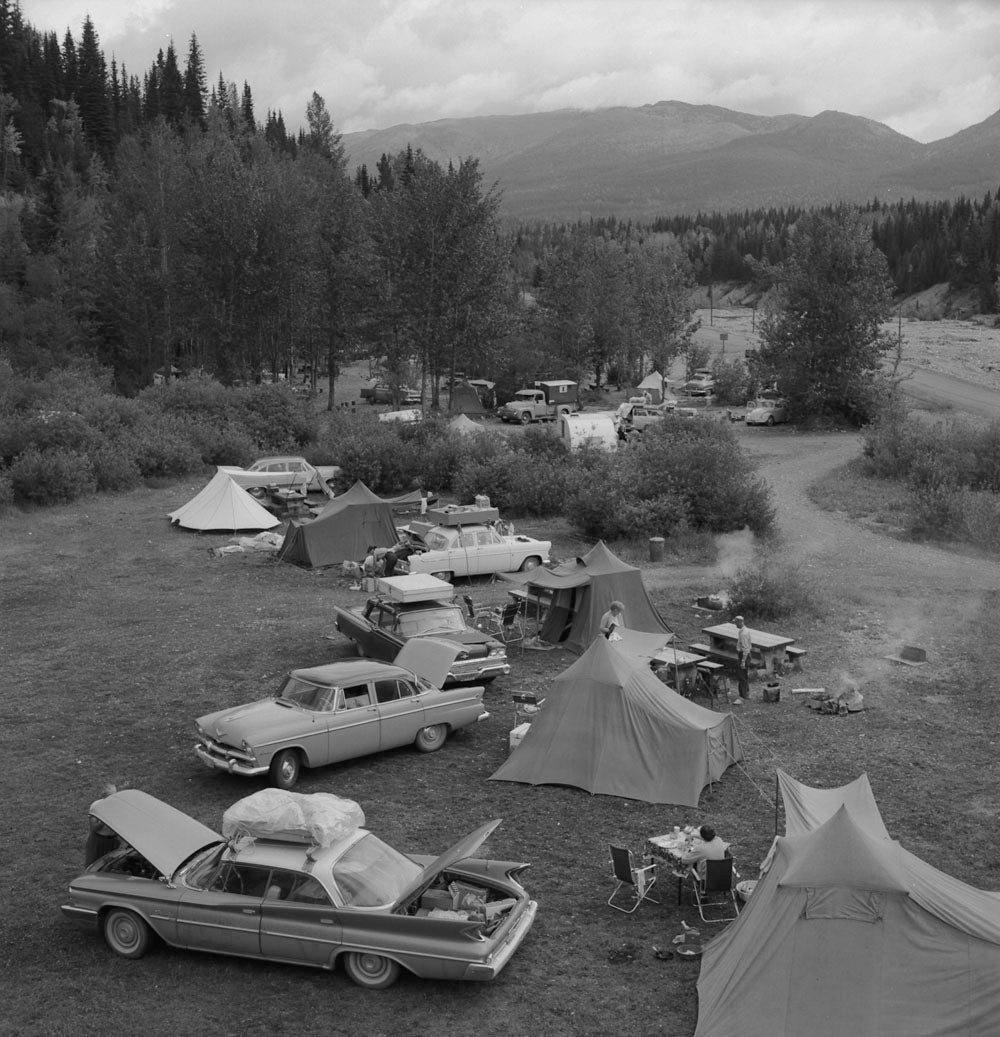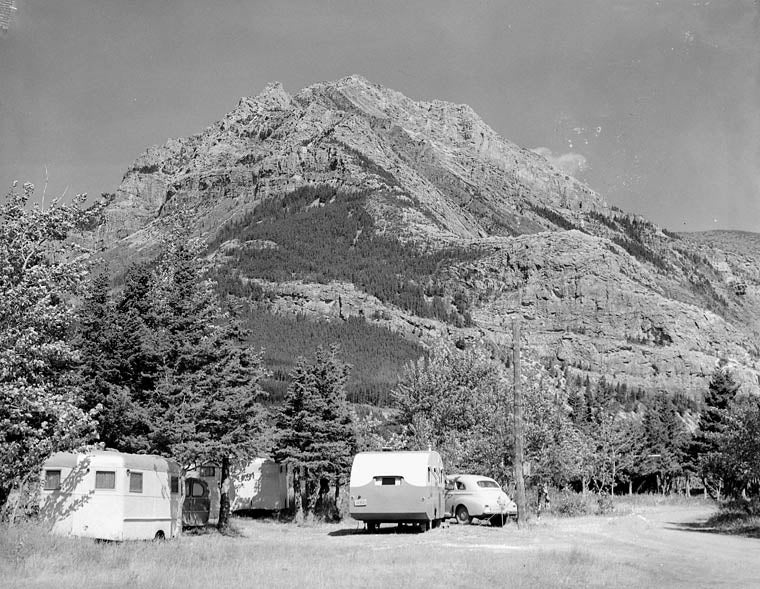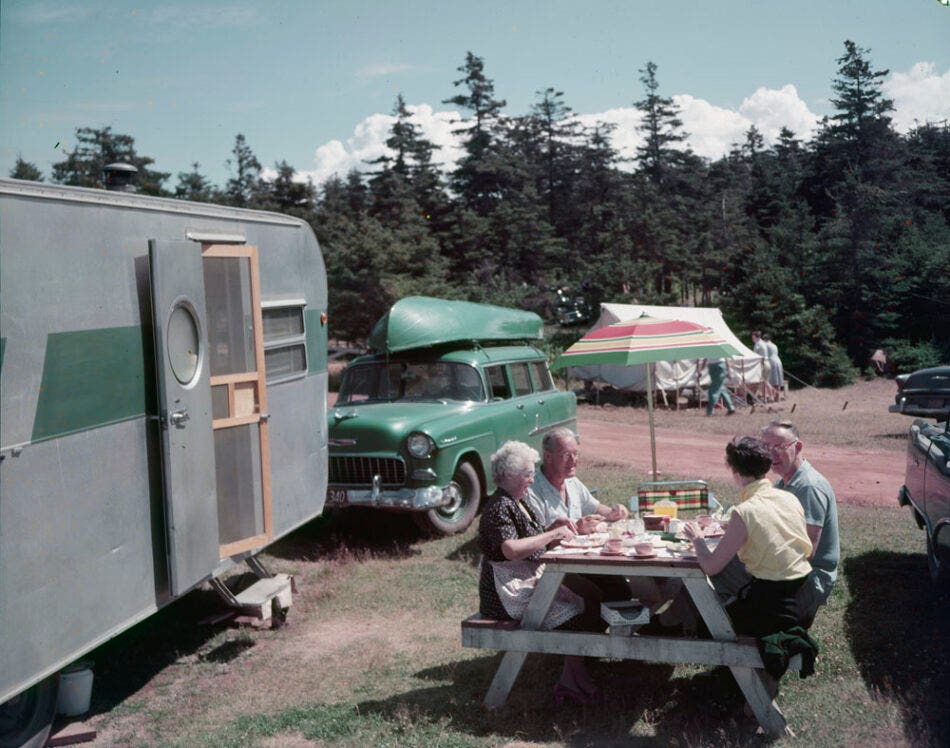Camping evokes a lot of memories for many Canadians. Campfires hot dogs smores… Swimming biking and running through nature… A good time spent with friends or family. There’s probably at least one memory of the weather doing its very best to ruin a trip whether it’s with incessant rain or awakening to a frozen snowy world.
We take a look at the history of camping in Canada and how it’s evolved through to today.
Origins of Camping in Canada
If you define camping as the Canadian Encyclopedia does as “living in a temporary or mobile shelter in the outdoors” camping has long been practiced by many Indigenous Peoples in Canada. Early European explorers and trappers also lived this way. This way of life was a means of survival.
Although camping traditions associated with sport hunting and fishing have existed since colonizers arrived and discovered Canada’s abundant game recreational camping began to appear by the 1890s. Woods Manufacturing Company (today found in Canadian Tire) was created in 1885 selling tents sleeping bags and other camping equipment to the general public with great success by 1895. Other companies such as Canadian Pacific Railway encouraged tourism and recreation in the great outdoors. Canada’s first National Park in Banff (then known as Banff Hot Springs Reserve) was established in 1885. By the 1890s youth groups churches unions and governments were sponsoring camping trips to improve health and happiness.
Camping became increasingly popular over the next several decades. The National Parks Act was passed in 1930 which officially set aside land for the “benefit education and enjoyment” of Canadians. In Alberta the Provincial Parks and Protected Areas Act was also passed in 1930 and Aspen Beach Provincial Park was established in 1932 to be followed by many more preserved parks and recreational areas. The Canadian Camping Association (CCA) was founded in 1936 as a non-profit national federation “dedicated to the growth development and promotion of organized camping” for all Canadians. Common Canadians were beginning to experience the joys of camping.
The first RVs also appeared during the early twentieth century. The Tin Can Tourists were founded in Florida in 1919 and promoted camping and RVs across the US which also inspired Canadians. A few companies began manufacturing RVs with some selling in Canada. You can see a few examples of these original RVs here .
Unfortunately the Great Depression of the 1930s and the Second World War from 1939 until 1945 greatly affected all leisure activities including camping. Shortages of fuel and material greatly affected the RV industry and Canadians’ attention was turned towards the war effort.

Canadians Begin to Camp in Earnest
After the end of the Second World War camping took off as a recreational activity in Canada. According to the Britannica Encyclopedia this was due to an increase in leisure time and more access to motorized vehicles. Infrastructure had also improved greatly throughout Canada. The provincial and federal governments agreed to develop campgrounds every 160 kilometres along the Trans-Canada Highway and these stops quickly became very popular. Private campgrounds also sprang up and Canadians headed out to experience the great outdoors. Organizations like the BC Lodging and Campgrounds Association were formed to help promote camping and RVing across Canada.
In Alberta the provincial government established 46 new provincial parks between 1951 and 1971. Developed to allow Albertans to enjoy outdoor recreation these parks provided campgrounds playgrounds and access to boating and fishing as well as hiking and other outdoor activities. Conservation became more important on a provincial level as well as on a national level with the revised National Park policy in 1979. New companies such as MEC began to make gear more easily available to adventurous Canadians. Camping was becoming more and more accessible.
The RV industry also took off in the 1960s. Increasingly convenient and comfortable companies like Winnebago and Jayco began producing RVs for the everyday consumer. Canadian companies such as Roadtrek (then known as Home & Park Vehicles ) and Boler were innovators in the RV industry as well. RV dealerships were established across Canada and organizations like the Canadian Recreational Vehicle Association were established to maintain quality and safety in Canada’s RVs.

Canadians Camping Today
Today 65% of Canadians say they camp at least occasionally. Weather and comfort have driven many Canadians to adopt the RV as their home-away-from-home particularly in Alberta. According to CBC 26% of Albertans own an RV. These units have doubled in size from the 1970s when the average trailer size was 7 feet by 21 feet. Now it’s 13 feet by 40 feet. Are we camping or glamping?
Provincial parks and private campgrounds continue to be the most popular camping destinations. New parks and campgrounds are established each year although there is greater emphasis on conservation while still allowing campers to enjoy Canada’s natural beauty. Over 33% of Albertans visited a provincial park in 2016 and the province’s national parks saw a combined 7.3 million visitors in 2016/2017 and over 7.7 million visitors in 2017/2018 . Camping is an important part of the economy as local and international tourism increases.
Whether you camp once a year or every weekend you can you’re part of a long-standing tradition. Happy camping!

